Organismal Health
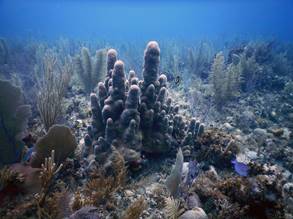
Reactive Oxygen Species in Coral Physiology and Health
Reactive oxygen species (ROS) are paradoxically both beneficial and detrimental to organismal health. Yet, in coral reef ecosystems, ROS are widely viewed as toxic agents causing bleaching and death. We are exploring the role of ROS and the associated enzymatic pathways in coral health by serving important roles in the immune response and basal physiology. This research is funded in part by the Schmidt Marine Technology Partners.
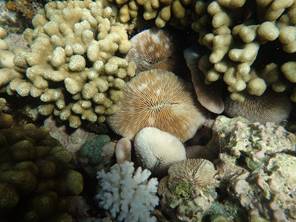
Health Diagnostics within Compromised Ecosystems
In many marine ecosystems, health is assessed through visual observation of symptom (e.g., paling or lesions on corals) that are indicative of an underlying condition or disease. Once symptoms present, however, it is often too late for meaningful preventative intervention or treatment. Taking a cue from human healthcare, we are exploring the presence and identity of diagnostic chemicals that are signs of early stage stress and health malfunction within coral reefs and seagrass ecosystems. At present, we are focusing on ROS and volatile halogenated organic compounds (VHOC). This research is in the development stage with some support from the WHOI Reef Solutions Catalyst program.
Chemistry of Ecosystem Function
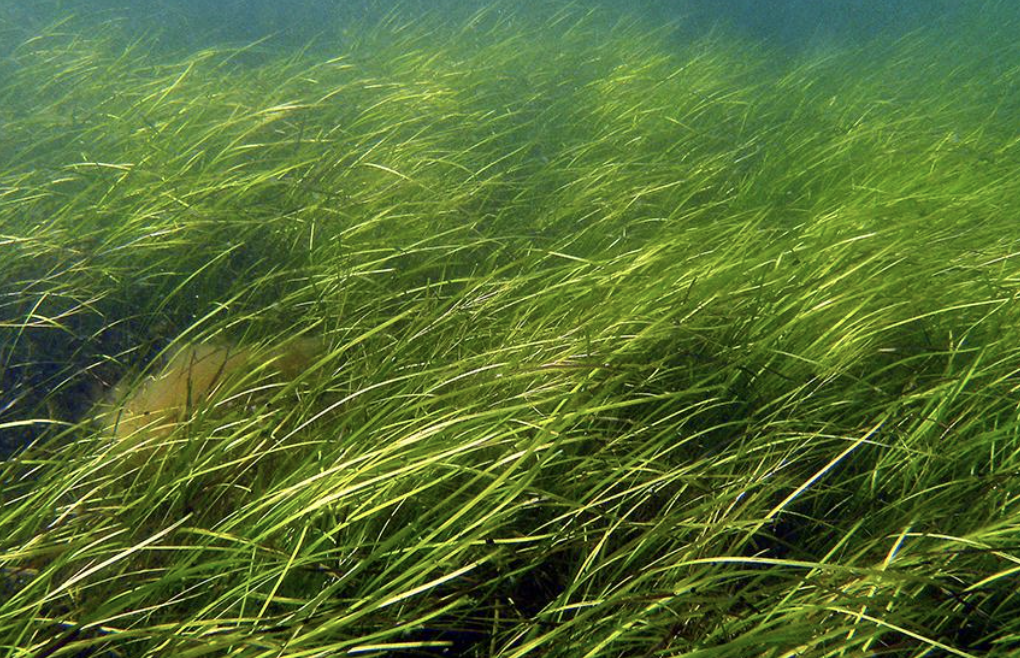
Oxygen Cycling in Seagrass Ecosystems
Seagrass beds are important ecosystems in the cycling of carbon. The productivity of and potential for seagrass ecosystems as blue carbon sinks are a function of the dynamics, cycling, and availability of oxygen. We are exploring the role of reactive oxygen species formation on oxygen budgets within seagrass ecosystems. This project is partially funded by an MIT-WHOI Ocean Ventures Fund.

Links between ROS and VHOC Emissions form Seaweed Ecosystems
Rapid expansion in aquaculture raises questions about the impacts of seaweeds on seawater chemistry. While seaweeds are known to produce ROS, the production rates and dynamics have yet to be constrained. This project aims to characterize hydrogen peroxide production as well as secondary production of ozone-depleting VHOCs (e.g. bromoform) by diverse species of seaweeds, thereby providing important information for evaluating the consequences of large-scale seaweed farming on the environment.
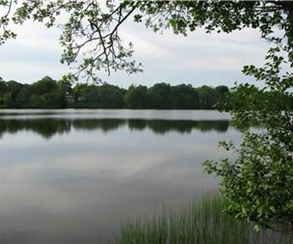
(Photo)chemical Controls on Mn Cycling in Stratified Waters
The impact of sunlight on the manganese (Mn) cycle has historically been limited to photoreductive processes. More recent lab and field studies however have pointed to the potential for light dependent (a)biotic processes in the formation of Mn oxides within surface waters. The goal of this research is to explore the underlying processes responsible for light mediated Mn oxide formation within a local redox-stratified pond on Cape Cod. This project is funded by the NSF Low Temperature Geochemistry and Geobiology program (EAR-2025853).

Reactive Intermediates in Establishing Redox Gradients within Stratified Waters
Reactive intermediates are notoriously difficult to study, yet likely play key roles in the establishment and maintenance of suboxic zones and chemoclines within marine systems. This research explores the linkages between the manganese, iodine, oxygen, and nitrogen (MnION) cycles within the permanently stratified Baltic Sea. This project involves a multi-institution, international team, including colleagues Scott Wankel (WHOI), Dalton Hardisty (Michigan State), Vero Oldham (URI), Maren Voss, Heide Schulz-Vogt, and Olaf Dellwig (IOW, Germany), and Dirk de Beer (MPI). This project is funded by the NSF Chemical Oceanography program (OCE-1924236).
Sensor Development

Development and Validation of ROS Sensors for Coral Reef Science
Understanding the role of ROS in ecosystem health has been hindered by the inability to measure these short-lived species in situ. We have developed a diver-operated submersible chemiluminescent sensor (DISCO) to allow for in situ measurements of ROS associated with corals. This project is in collaboration with Jason Kapit, William Pardis, and Scott Wankel at WHOI and is funded by the Schmidt Marine Technology Partners (SMTP).

Development and Validation of Full Depth Marine ROS Sensors
Using DISCO as a foundation, we are developing autonomous and remotely-operated chemiluminescent sensors for measuring ROS throughout the ocean with a current depth rating of 4500m. Our first sensor, SOLARIS, has the ability to make measurements at specific features using a remotely operated wand (e.g., on vehicle platforms) and throughout the water column (e.g., on CTD rosettes). This project is in collaboration with Jason Kapit, William Pardis, and Scott Wankel at WHOI and is funded by the NSF OTIC program (OCE-1736332)
Biomineralization and Mineral Geochemistry
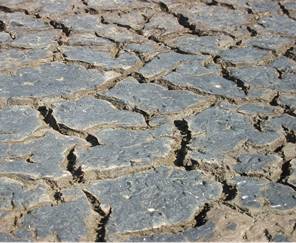
Photochemical and Mineral Mediated Mn Oxide Formation
Observations of Mn oxides in modern, ancient, and extraterrestrial systems are often interpreted as evidence for the presence of O2 and even life. Nevertheless, a growing body of evidence suggests that photochemical reactions may exert an important, yet poorly constrained control on Mn(II) oxidation and Mn(III,IV) oxide formation. The overall goal of this research is to constrain the geochemical conditions where photochemical processes lead to formation of Mn oxides, and determine whether these pathways impart distinct structural and isotopic signatures within the oxides. This project is in collaboration with Collin Ward and Scott Wankel (WHOI) and is funded by NASA Exobiology (80NSSC21K0481).
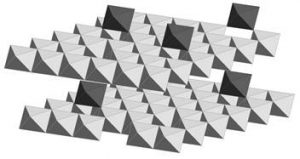
Trace Element Isotopic Fractionation Imparted by Mn Oxides
The oxygen content of the ocean has been one of the primary factors controlling the origin, evolution and diversification of life on Earth. Recent studies have shown that the thallium (Tl) isotope composition of seawater depends critically on the global burial rate of Mn oxides due to strong adsorption and associated isotope fractionation of Tl between seawater and Mn oxides. This research couples mineralogical and isotopic analysis to determine what controls the isotopes of Tl associated with Fe-Mn minerals. This project is in collaboration with Sune Nielsen (WHOI) and is funded by the NASA Exobiology program (80NSSC20K0615).
Completed Projects
Identifying Cross-talk Between Nitrogen and Manganese Redox Cycling (NSF EAR-2025853; 2018-2021)
Identifying Controls on Weathering of Seafloor Massive Sulfide Deposits (NSF OCE-1657794; 2017-2021)
Physiological Plasticity and Response of Benthic Foraminifera to Oceanic Deoxygenation (NSF IOS-1557430; 2016-2019)
Calibration of Two Novel Biosignatures in Manganese Oxides: Biomolecule Mineral Templates and Oxygen Isotopes as Records (NASA Exobio NNX15AM04G; 2015-2018)
Defining the Role of Biologically Produced Reactive Oxygen Species in Dark Mercury Cycling (NSF OCE-1355720; 2014-2018)
A Dual Isotope Conundrum: Unraveling a Cryptic Subsurface N Cycle (NSF EAR-1252161; 2013-2016)
Elucidating the Role of Animal Heme Peroxidase and Organic Complexing Agents in the Formation of Mn Oxides by a Roseobacter bacterium (NSF EAR-1322790; 2013-2016)
Optimization of Metal Attenuation in Biologically-active Remediation Systems (NSF CBET-1336496; 2013-2016)
Modeling, Patterning and Evolving Syntrophic Communities that Link Fermentation to Metal Reduction (DOE BER 72211900)
Biological Controls on Reactive Oxygen Species in the Oligotrophic Ocean (NSF OCE-1129594; 2011-2014)
Assessing the Potential Consequences of Subsurface Bioremediation: Fe Oxide Bioreductive Processes and Propensity for Contaminant-Colloid Co-Transport and Media Structural Breakdown (SERDP ER-2130 2011-2014)
Biological Production of Reactive Oxygen Species in Freshwaters (NSF EAR-1024817; 2010-2013)
CAREER: Career Development in the Emerging Field of Geomycology: Research and Education in Metal Biomineralization by Fungi (NSF EAR-0846715; 2009-2014)
Defining a Novel Photochemical Pathway for the Oxidation of Manganese by Microbes (NSF EAR 0817653; 2008)